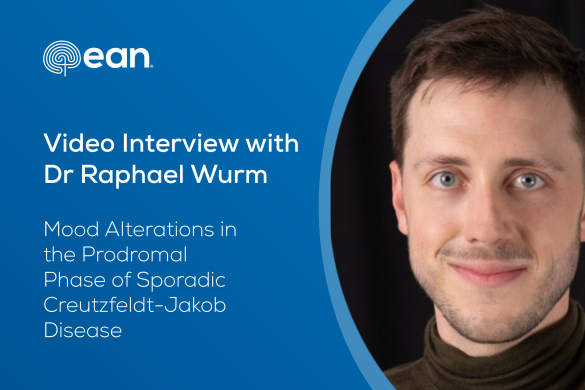For September 2015 we have selected: The Cancer Genome Atlas Research Network. Comprehensive, integrative genomic analysis of diffuse lower-grade gliomas. N Engl J Med 2015;372:2481-2498.
There are currently several limitations with the histopathological classification of lower-grade gliomas, mainly related to high interobserver variability and insufficient prediction of clinical outcome. However, the genetic classification seems to be more reliable for therapeutic decisions. Indeed, oligodendrogliomas with IDH mutations and 1p/19qcodeletion seem to be associated with a better response to radiochemiotherapy and longer survival. Moreover, astrocytomas with TP53 and ATRX mutations appear to be also linked with better outcome.
To further support the greater utility of genetic classification, the Cancer Genome Atlas Research Network has performed genomewide analyisis of 293 low-grade gliomas from untreated adults using multiple advanced molecular platforms. Exome, mRNa, and microRNA sequencing, DNA methylation profiling, TERT promoter sequencing and RPPA profiling were completed in 254 samples. Whole-genome sequencing was performed on 21 samples, whereas low-pass whole genome sequencing was done on 52 samples. Unsupervised analyses from these platforms, including cluster of clusters and OncoSign, were done.
Results from molecular platforms were compared with histologic and genetic biomarker classification. Consistently with previous studies, there was a strong correlation between the oligodendroglioma histologic class and the presence of IDH mutation and 1p/19q codeletion. Gliomas with IDH mutation and no 1p/19q codeletion were a mixture of histological classes but enhanced for atrocytomas and oligoatrocytomas, whereas IDH wild-type samples were mostly atrocytomas and grade III gliomas. Moreover, the multiplatform integrative analysis found well-defined clusters based on DNA methylation, gene expression, DNA copy number and microRNA expression correlated to the different IDH-1p/19q subtypes. To note, almost all lower-grade gliomas with IDH mutation and no 1p/19q codelation held TP53 mutations and ATRX inactivation. Patients with wild-type IDH had shorter survival compared to patients with mutated IDH, whereas patients with mutated IDH and 1p/19q codeletion had the longest survival.
“These findings add further evidence of a better categorization of lower-grade gliomas subtypes using the genetic classification compared with the histological one,” says Prof. R. Soffietti, Department of Neuro-Oncology, University of Turin, Italy. “The recognition of different tumor classes identified according to IDH, 1p/19q, and TP53 status is very important since it is linked to different clinical behavior. These differences will allow defining patient outcome and customising treatment approach.”
“The confirmation that so-called lower-grade gliomas with IDH mutation can have either 1p/19q codeletion or TP53 mutation support previous hypotheses that there are two fundamentally different molecular mechanisms of oncogenesis among these tumors, says Prof. M. Weller, Department of Neurology, University of Zurich, Switzerland. “These tumoral molecular signatures are crucial for better understanding brain tumor pathogenesis, clinical decision making and development of targeted therapeutic strategies. Determination of IDH and 1p/19q status should be standard of care in these patients”.
The other nominees for the September paper of the month are:
- Eckel-Passow JE, Lachance DH, Molinaro AM, et al. Glioma groups based on 1p/19q, IDH, and TERT promoter mutation in tumor. NEJM 2015;372:2499-2508. Gliomas were classified in five molecular groups according to the presence of mutations in TERT promoter, IDH and codeletion 1p/19q. Different age at diagnosis, clinical behavior, survival, and associations with germline variants varied in the five groups, reflecting distinct mechanism of pathogenesis.
- Shin J-Y, Park M-J, Lee SH, et al. Risk of intracranial haemorrhage in antidepressant users with concurrent use of non-steroidal anti-inflammatory drugs: nationwide propensity score matched study. BMJ 2015;351:h3517 (doi: 10.1136/bmj.h3157). In this retrospective national Korean study the risk of intracranial hemorrhage among patients treated with antidepressant with and without NSAIDs was analyzed in 4,145,226 people. The combined used of antidepressant and NSAIDs was associated with increased risk of intracranial hemorrhage, especially in men.
- LePage E, Veillard D, Laplaud DV, et al., for the COPOUSEP I and the West Network for Excellence in Neuroscience. Oral versus intravenous high-dose methylprednisolone for treatment of relapses in patients with multiple sclerosis (COPOUSEP): a randomized, double-blind, non-inferiority trial. Lancet Neurol 2015; June 29 (doi: 10.1016/S0140-6736(15)61137-0). 199 patients with multiple sclerosis were randomly assigned to oral or intravenous methylprednisolone treatment (1000 mg once a day for 3 days) within one-week average from relapse onset. At 1 month, both groups improved to the same extent and with a similar safety profile.
- Zanhe L, Noack C, Hahn K, Stenzel W, Lipp A. Phosphotylated alpha-synuclein in skin nerve fibres differentiates Parkinson’s disease from multiple system atrophy. Brain 2015;138:2310-2321. The presence of phosphorylated alpha-synuclein in sympathetic nerve fibres and dermal nerve fibre density was investigated on skin biopsies form small groups of patients with Parkinson’s disease multiple system atrophy and essential tremor. Peripheral phosphorylated alpha-synuclein was limited to parkinsonian patients.






